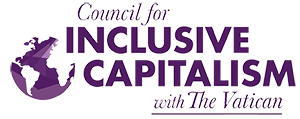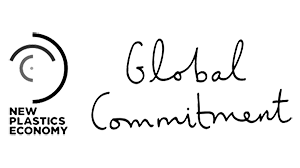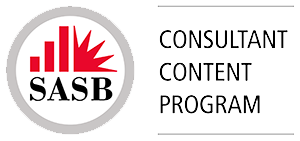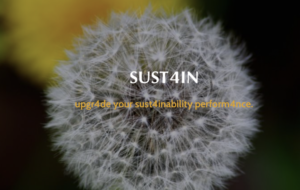Sustainable Development Goals: Two Years On – International Conference

Article by Marcio Viegas, founder and managing director, SUST4IN
It is now clear that the Sustainable Development Goals (SDGs) are an enormous business opportunity and responsibility.
New reports from the UN Global Compact and the WBCSD show that business understand the opportunity, but real action is missing. 75% of respondents (almost 1,500 companies) to a UN Global Compact survey say that they are taking action on the SDGs. 79% of WBCSD member company reports acknowledge the SDGs in some way. 45% align their sustainability strategy with goal-level criteria, but only 6% of reports have aligned their strategy and targets to specific target-level SDG criteria and measured their contributions to key SDGs.
We need to act faster not to miss the boat: either because a hurricane can take the boat away or because someone else sailed it without us. As we discussed in New York in September, Climate change (SDG13) and inequality (SDG10 and SDG5) are the two major challenges to society. Efforts to slow the pace of climate change have come up short, as global temperatures and natural disasters continue to rise. At best, we have 1,000 days to create a turnaround.
Setting a budget for the SDGs – beyond the traditional sustainability department budgeting – is key to move from acknowledgement, to commitment to real action.
How to convince a sceptical CFO that the SDGs can bring results, even in the short term?
Firstly, it depends where your company is in the “SDGs Journey”. We have identified four broad stages:
- a) Not aware
- b) Aware and talking, but no proper action
- c) Isolated actions, including reporting and budgeting
- d) All the company is engaged in proper actions, including site level reporting and budgeting
If your company is between b) and c), you can then follow some tactics listed below to create or improve your “SDGs Budget”. If your company is still in a) or already in d), you can still follow our suggestions, but you may find them either confusing or too basic for you.
Nine tactics to Budget for the SDGs
1) Update or convince your CEO on the SDGs case, if she or he is not convinced yet
CEOs are now starting to think more long term or somehow beyond 2018. There are plenty of CEOs already supporting the SDGs, from Paul Polman, CEO of Unilever, to Mark Zuckerberg, CEO of Facebook. Your CEO may then help you convincing the CFO.
Resources
> This CEO Guide to the SDGs can also be useful to convince your big boss (and the CFO).
> The User’s Guide to The Breakthrough Pitch: How to stretch the sustainability ambitions of business executives is a new template to help business leaders — including Chief Sustainability Officers (CSOs) — build and present the case for “breakthrough change”.
2) Watch your language
The SDGs are not “UN” SDGs
Unfortunately, the United Nations (UN) are linked to bureaucracy or, to say the least, grandiloquence. Most importantly the SDGs are not just for the UN or indeed its “member states”, they are for everybody, including business and investors. Unless you do business with the UN or if you really think the UN brand can help, keep it simple, avoid our favourite acronym and say it in a crescendo Sustainable, Development, Goals!
Do not start the conversation with SDG1: No poverty.
Start with the SDGs more “material” (accountants love this term!) to your business. Let’s be honest, SDG1: No poverty normally puts business people off. No matter how important it is, the goal sounds unrealistic and not a business priority. You may even try to show the progress in the recent years or cynically say that poor people are not “clients”, but you better catch attention with goals like SDG8: Economic growth or SDG9: Industry, innovation and infrastructure!
Do not mention “2030” or “future generations”
Financial people are now concerned with closing 2017, then with 2018 and possibly with that “Strategic Plan 2015-2020”. Think about what you can achieve next year or by the “Strategic Plan” horizon.
Resources
- The SDG Compass, which provides guidance for companies on how they can align their strategies as well as measure and manage their contribution to the realization of the SDGs.
- The recently published Blueprint for Business Leadership on the SDGs with very detailed information about each SDG.
- The official “Transforming our world: the 2030 Agenda for Sustainable Development” where the Goals are called global or universal, “bringing together Governments, the private sector, civil society, the United Nations system and other actors and mobilizing all available resources”. Note that some targets are for 2020!
3) Show that investors are pushing for the SDGs
Even if your company is not listed in New York or Paris or issuing Green Bonds, what institutional investors, equity funds or even “millennials” are starting to ask is a clear signal of change.
Beyond the “old” and fast growing Socially Responsible Investment (SRI) or Environmental, Social and Governance (ESG) trend, the SDGs are now part of the agenda of investors and initiatives such as Aviva, the Dow Jones Sustainability Index (DJSI), Principles for Responsible Investment (PRI) or UBS, the Swiss bank.
Investors are changing because of moral issues, but most importantly because sustainability – and the SDGs in particular – are good business or better risk management.
Resources
- The DJSI/RobecoSAM Questionnaires with specific questions about how companies align their strategy with the SDGs. Can you answer them?
- The SDG Investment Case which explains how the SDGs are part of investors’ “fiduciary duty”, plus risks and opportunities
- Mobilizing private wealth for public good, the white paper published by UBS at the World Economic Forum in Davos this year, on how to attract private wealth towards the SDGs (and probably to your company).
4) Focus your budget on three to maximum five SDGs that are more relevant to your business
If you have not done your “SDGs Materiality Assessment” homework yet, you will need to… budget for it first, plus training and maybe consulting. It takes from a few weeks to half a year to do it properly. Then focus on making a difference on the SDGs that are more “material”, while at least complying with the others.
Resources
- Again the SDG Compass is, despite its pitfalls, a great tool to guide you on defining priorities, at corporate and local levels and across the value chain
- You can also use the GRI Standards with the SDGs as a “check list” for external factors.
5) Budget for awareness campaigns and training
Make sure you walk the talk internally first, even if you are far in the “SDG Journey”.
Ask Human Resources to help getting all your colleagues at least aware of the big picture and the most relevant SDGs. Properly train the managers – namely the middle managers – responsible for leading the actions. If you have colleagues who are good at motivation techniques, management of change, elearning, communication, design thinking or storytelling, get them to help! Getting people aware and motivated is something tangible and will help getting things done.
Resources
- Yourself! with the help of your colleagues mentioned above and videos available on Youtube and Vimeo.
- No time? Be one of the first to use Sustainable Development Goals for Business, the first online awareness tool, elearning course and guidebook to implement the SDGs at the business level. We are suspicious as SUST4IN is developing it, but see on the link above what leaders like Paul Polman or Sir Mark Moody-Stuart said recently.
6) Set KPIs, monitoring, accountability and reporting systems. The SDGs are measurable!
Set clear KPIs that the CFO will understand. Use some of the original SDGs’ targets and indicators. Again, they are a bit overwhelming, but if your company can more or less follow the same targets and indicators, you can even benchmark with governments – they are committed to be transparent, see SDG16.6 – and other companies.
Resources
- The SDGs Indicators, focusing only on your priorities. You can for instance start reporting, if you do not do it yet, your company’s “CO2 emission per unit of value added” as per SDG indicator 9.4.1. Otherwise wherever you see “GDP”, replace it by “revenue”.
- Set stretch goals for managers if you can. Recent research on “The Effect of Target Difficulty on Target Completion: The Case of Reducing Carbon Emissions”, for instance, shows that stretch goals have a great effect (to a certain level), but do not mix them with bonuses!
7) Use real business opportunities
The SDGs prize represents $12 trillion per year and 380 million new jobs! This is so big, approximately 10% of global GDP, or 10% of your revenue, that John Danilovich, Secretary General of the International Chamber of Commerce, calls them BDGs: Business Development Goals.
That is maybe too big. Get more information, be more granular and try to convert that into opportunities in the sectors and geographies where you are active.
Resources
- The Better Business, Better World report is the most quoted reference for the SDGs Business Case. It identifies 60 business opportunities, or the “SDGs Prize” ranging from mobility systems, new healthcare solutions, energy efficiency or affordable housing.
- The already mentioned Blueprint for Business Leadership on the SDGs has specific opportunities for each SDG.
8) Be threatening: If the SDGs are not achieved, there is no business
Business can only succeed in thriving societies. Water scarcity, social unrest or natural disasters can disrupt the society, markets, the company and its value chain. Insurance costs go up and so on. Even a CFO who is about to retire without stock options should be ethically committed to the growth or simply the stability and “business continuity” of the company and its employees.
Resources
- The World Economic Forum publishes every year its Global Risks Report. The 2017 edition shows that four out of the five risks with the biggest impact are directly linked to the SDGs: Extreme Weather Events (SDG13 and others), Water Crises (SDG6), Major Natural Disasters (SDG13, SDG9 and others), Failure of Climate Change Mitigation and Adaptation (SDG13)
- The Better Business, Better World report estimates the costs of burdens such as violence and armed conflicts (9.1% of global GDP in 2014), Biodiversity and ecosystem impact (3.1%), Smoking (2.8%), Obesity (2.7%), Corruption (2.0%).
9) Be positive and establish partnerships
Stop moaning that your government is not actively implementing the SDGs, even if it is probably true. Show what business, clients, investors and CEOs are doing and yes, try to budget time and funds to establish partnerships (SDG17) with cities, regional and national governments, NGOs and others.
If the countries where you operate have published their SDGs’ Voluntary National Reviews or their Climate Change Nationally Determined Commitments, you may want to dig into them and find where those countries are committed to invest. You may be surprised that some governments are already investing in areas where you are active: no need to lobby!
Resources
- See where your country is with the SDG Index, but use the information to motivate action!
- Find specific commitments, opportunities and risks, by country, through the Voluntary National Reviews: Japan, Germany, France, Brazil and India, for instance, have already published their reviews.
- Even more specific (and legally binding) commitments toward Climate Action (SDG13) can be found through the Nationally Determined Contributions (NDCs), part of the Paris Agreement. 165 countries have submitted their intended contributions.
Final word
We hope that you find some of our suggestions and related tools useful. Talk to us if you need help: from a chat with the CEO, to advisory, workshops or training.

We are a network of expert professionals on sustainability.
SUST4IN apoya:








